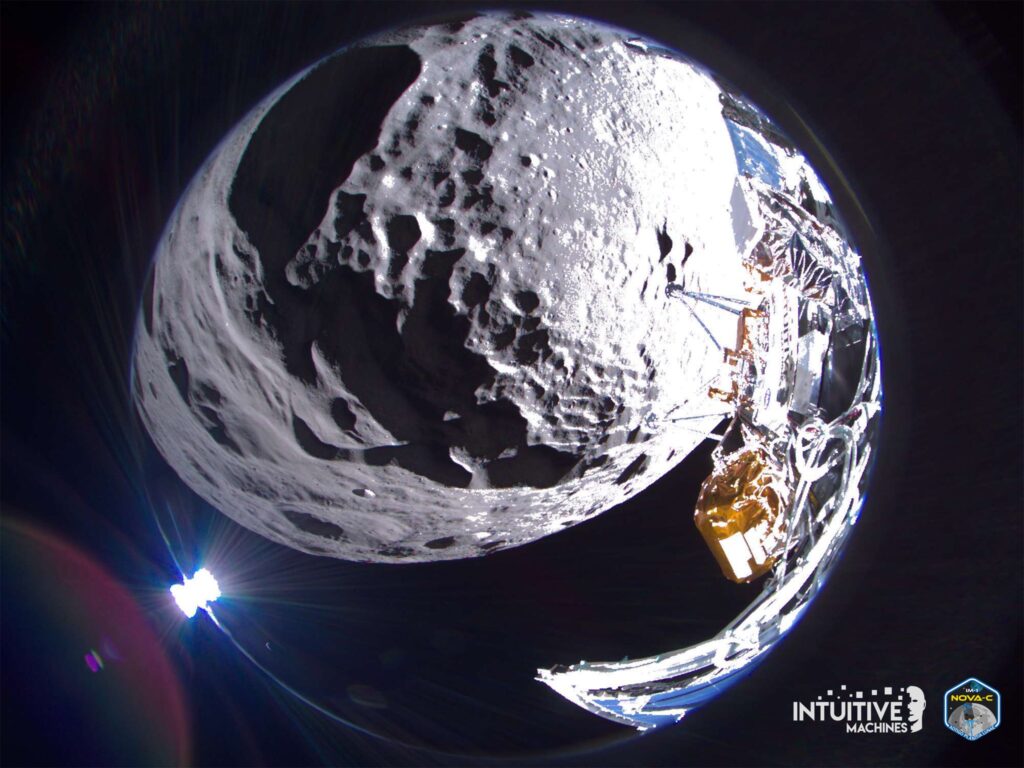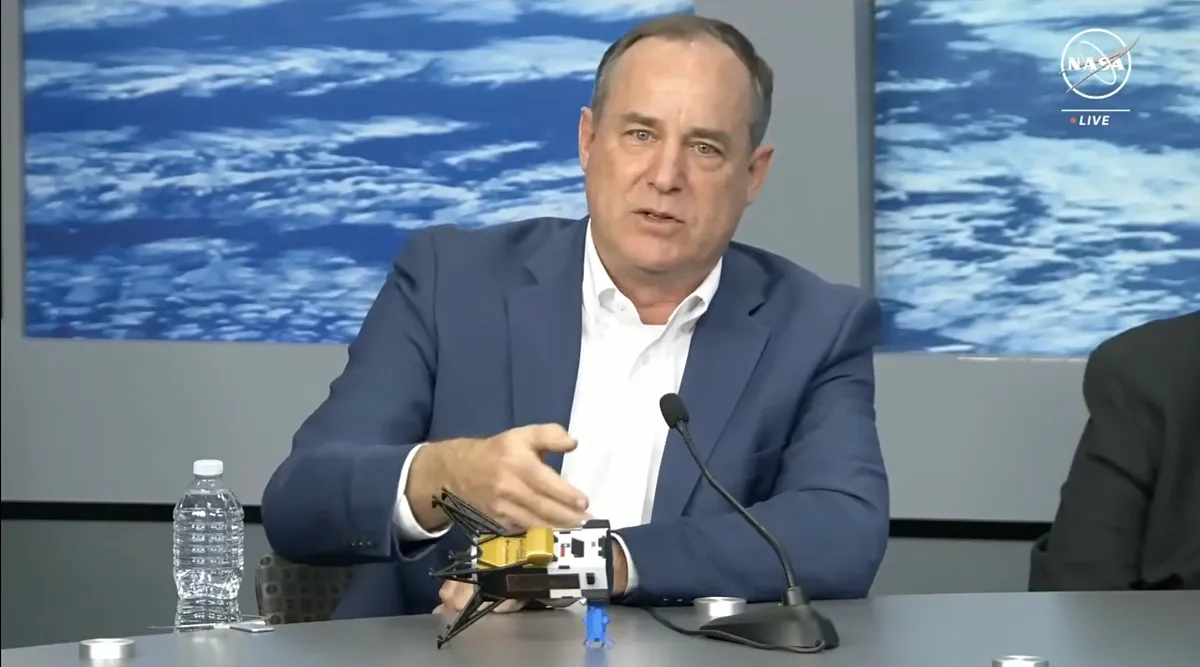The Odysseus probe shared the fate of the Japanese SLIM spacecraft and capsized during the lunar landing. This was announced by representatives of Intuitive Machines.
Troubled Moon Landing
The Odysseus moon landing occurred on the night of February 22-23 and was accompanied by problems: the spacecraft’s laser rangefinders did not turn on. This is a key tool needed for an accurate landing. Therefore, experts allowed the spacecraft to make an additional orbit around the Moon. During this time, a patch was urgently uploaded to it, which allowed using the NASA Doppler Lidar instrument instead of rangefinders, which was originally part of the payload and was a demonstrator.

These measures helped prevent the disaster. However, due to all the problems, the Odysseus descent did not take place in an optimal mode. The probe was descending faster than expected. It was assumed that the descent would take place in a straight line at a speed of about one meter per second, but instead the spacecraft descended at a speed about three times higher and with a lateral movement of about one meter per second. As a result, the Odysseus caught its “foot” on the surface and tipped over — perhaps it hit a rock or fell into a crevice. In addition, the probe did not fly several kilometers to the landing point.
As for the reason why Odysseus’s rangefinders didn’t work, it’s the human factor. Since lasers are unsafe for the eyes, it was equipped with a physical switch as a safety measure to prevent spontaneous activation of the instrument on the Earth. One of the engineers simply did not switch it before starting the spacecraft.
Technical condition of Odysseus
According to representatives of Intuitive Machines, there are no scientific instruments or solar panels on the side of the probe to which it fell on the regolith. Therefore, Odysseus receives energy, and its main systems operate normally. However, the abnormal position of the spacecraft significantly complicates communication with the Earth. So far, the probe is mainly sending telemetry to Earth. Engineers hope to stabilize the communication channel, which will allow the transfer of scientific data to begin.

Due to the emergency changes made to the software during the descent, Odysseus also did not reset the EagleCam student camera. It was supposed to capture the landing of the spacecraft. Experts plan to shoot it off, which will allow them to photograph the position of Odysseus on the lunar surface. In addition, the LRO spacecraft will pass over this area in the coming days. Its images will help clarify the landing site of the probe.
According to https://spacenews.com
Follow us on Twitter to get the most interesting space news in time
https://twitter.comne/ust_magazine


